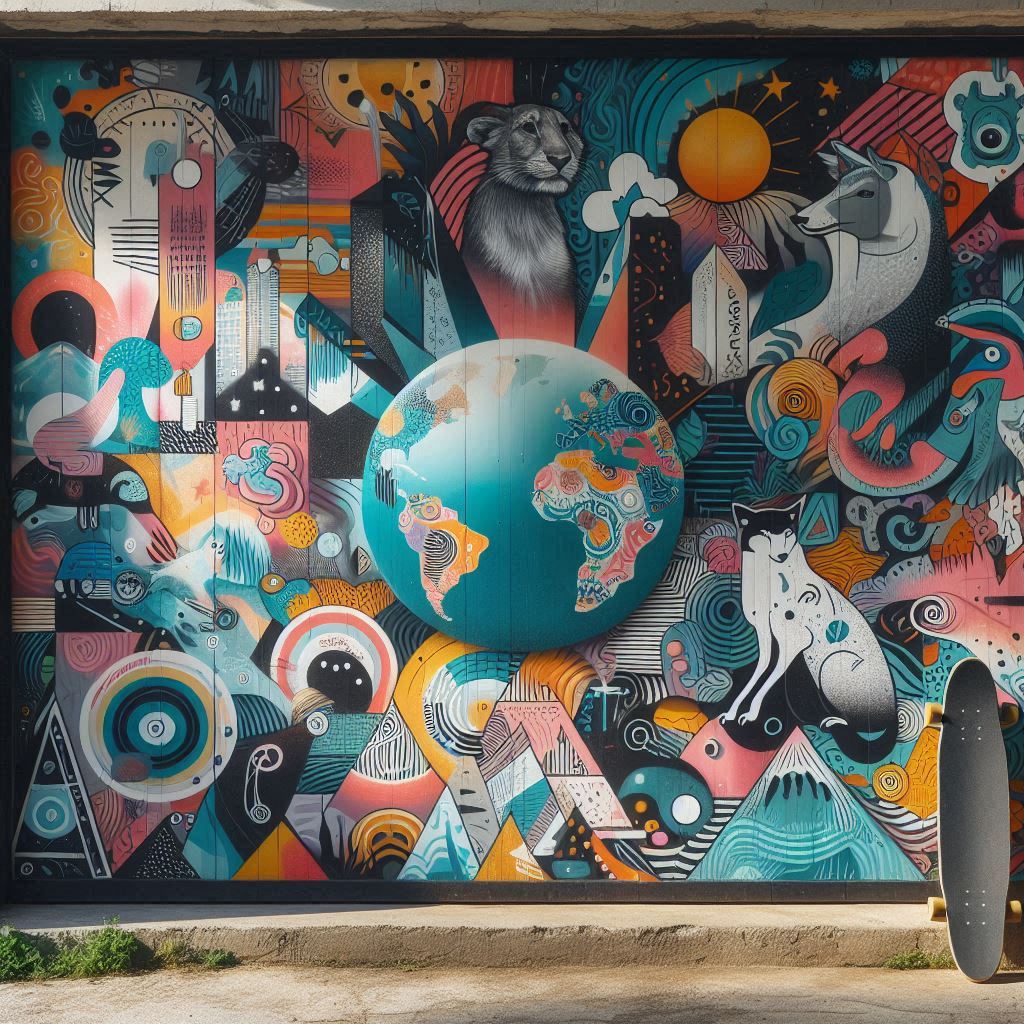
Are you wondering about painting your garage wall with several updated styles and formats available on the internet you can’t come up with an exact idea of a color combination that matches your garage size and look. So look no further I have come up with the 15 best updated wall paint ideas for your garage, which will be exactly according to your garage wall size and format so it will look good.
I will provide you with garage wall paint ideas with different garage sizes and formats so you can better choose the one that looks good on your garage. These ideas are tailored to suit various garage sizes and layouts, so you can confidently pick the combination that enhances your space. Let’s dive into these creative and practical wall paint options that will transform your garage into a more stylish and functional area.
15 Garage Wall Paint
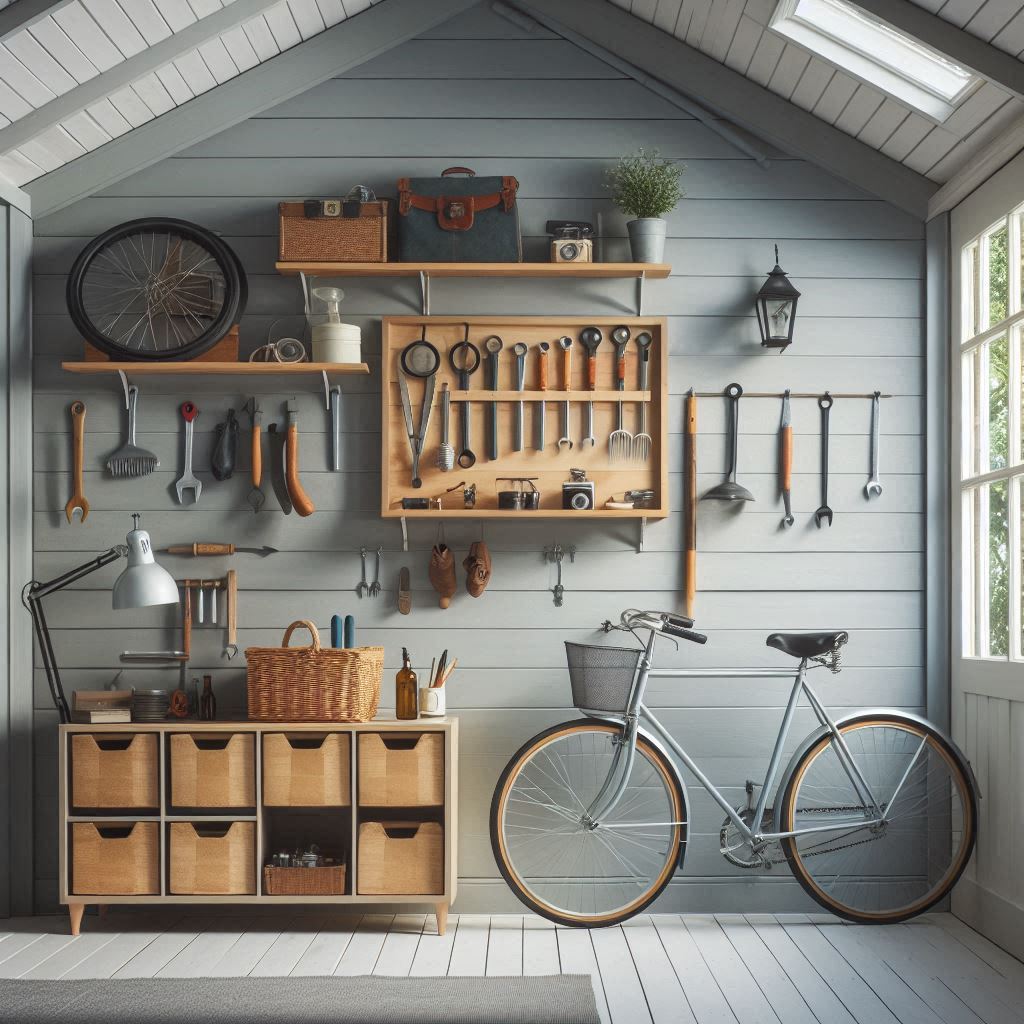
These ideas will help you find the perfect color combination, whether your garage is small, medium, or large.
1. White for Small Garages (Hot Climates)
White is ideal for small garages in warmer climates. It reflects sunlight, keeps the space cooler, and makes the garage look bigger and cleaner. It’s many people’s choice because it gives the simplest and best look.
2. Gray for Medium to Large Garages (All-Weather)
Gray is a versatile and modern choice that works well in all weather conditions. In hot climates, lighter shades of gray can help keep your garage cool, while in colder areas, darker gray adds warmth and coziness.
3. Navy Blue for Large Garages (Cool Climates)
If you have a big garage in a cooler climate, navy blue is a great option. It adds depth and a cozy vibe, making the space feel warmer during cold months.
4. Beige for Small to Medium Garages (All-Weather)
Beige is a warm, welcoming color that works well in both hot and cold climates. It gives a cozy feel to small and medium garages and helps create a homely atmosphere.
5. Charcoal and White for Large Garages (All-Weather)
Charcoal on one wall and white on the others create a modern contrast that works well in both warm and cold climates. This combination allows light reflection while adding a bold touch.
6. Mint Green for Medium Garages (Hot Climates)
Mint green is perfect for medium-sized garages in hot climates. It’s a cool, refreshing color that brings a breezy, calming feel, ideal for areas with warmer weather.
7. Brown for Large Workshop Garages (Cold Climates)
Earthy brown is a cozy, warm color that’s great for garages in colder climates. It makes a large garage feel more inviting and comfortable, especially if you use it as a workshop.
8. Black Accent Wall for Large Garages (Cold Climates)
For a bold look, try a black accent wall in a large garage, especially in colder areas. Dark colors like black absorb heat, helping to warm up your garage during winter.
9. Pale Yellow for Small Garages (All-Weather)
Pale yellow is a bright, cheerful color that works well in both hot and cold climates. It brings warmth and light to small garages, making them feel sunny and welcoming year-round.
10. Slate Blue and Gray for Medium to Large Garages (Cool Climates)
Slate blue and gray create a calm, modern look, perfect for medium to large garages in cooler areas. These colors give a balanced, sleek appearance and add a touch of warmth during cold weather.
11. Industrial Red for Large Garages (Cold Climates)
Deep red is an excellent choice for large garages in cooler regions. It creates an industrial, edgy look while adding warmth and energy to the space, making it feel cozier.
12. Olive Green for Large Garages (All-Weather)
Olive green adds a natural, earthy touch to large garages and works well in both hot and cold climates. It brings a calm and grounded feel to the space, no matter the weather.
13. Terracotta for Large Garages (Cold Climates)
Terracotta is a warm, earthy color that works beautifully in colder climates. It gives large garages a cozy, welcoming feel, making them appear warmer and more comfortable.
14. Light Blue for Medium Garages (Hot Climates)
Light blue is a cooling, serene color, perfect for medium garages in hot climates. It brings a crisp, airy feeling to the space, helping to keep it cooler during warm months.
15. Monochromatic Grayscale for Large Garages (All-Weather)
A monochromatic grayscale palette is sleek and modern, suitable for all weather conditions. Different shades of gray add depth and interest, and the versatility of the color ensures your garage looks stylish year-round.
What Are The Benefits Of Painting Garage Wall
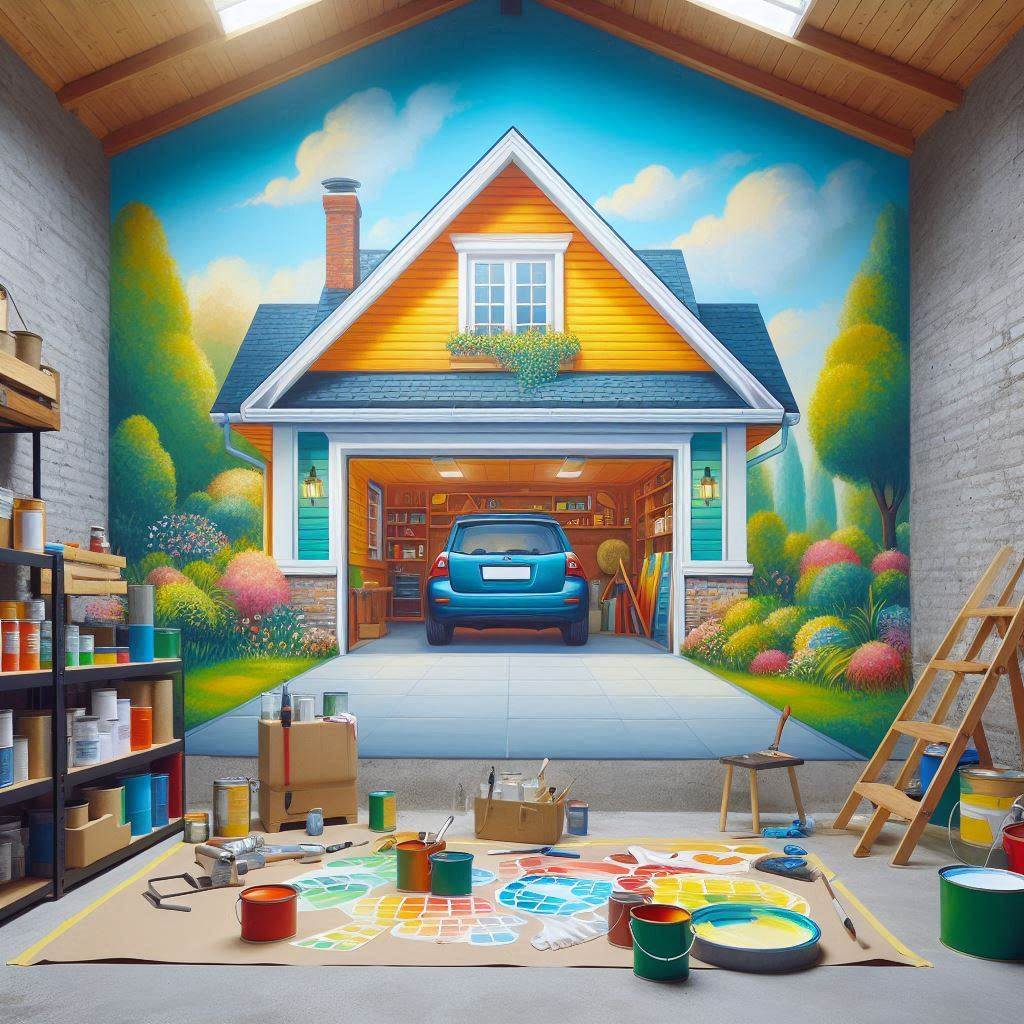
People often wonder why should we paint our garage walls and work so hard to keep them clean and tidy. When in the entire house it’s the less attention place and people hardly notice if it’s good and tidy or stylish. However, painting your garage walls has several benefits. It improves the overall look, making the space brighter and more welcoming. It also protects the walls from dirt, stains, and moisture, making them easier to clean.
A well-painted garage can prevent mold and damage while adding value to your home. Plus, a clean, bright garage makes it easier to work on your car or store it in a space that looks neat and organized. Even if the garage is not the most noticed place, a fresh coat of paint can make a big difference.
Should I use Interior or Exterior Paint for Garage Walls?
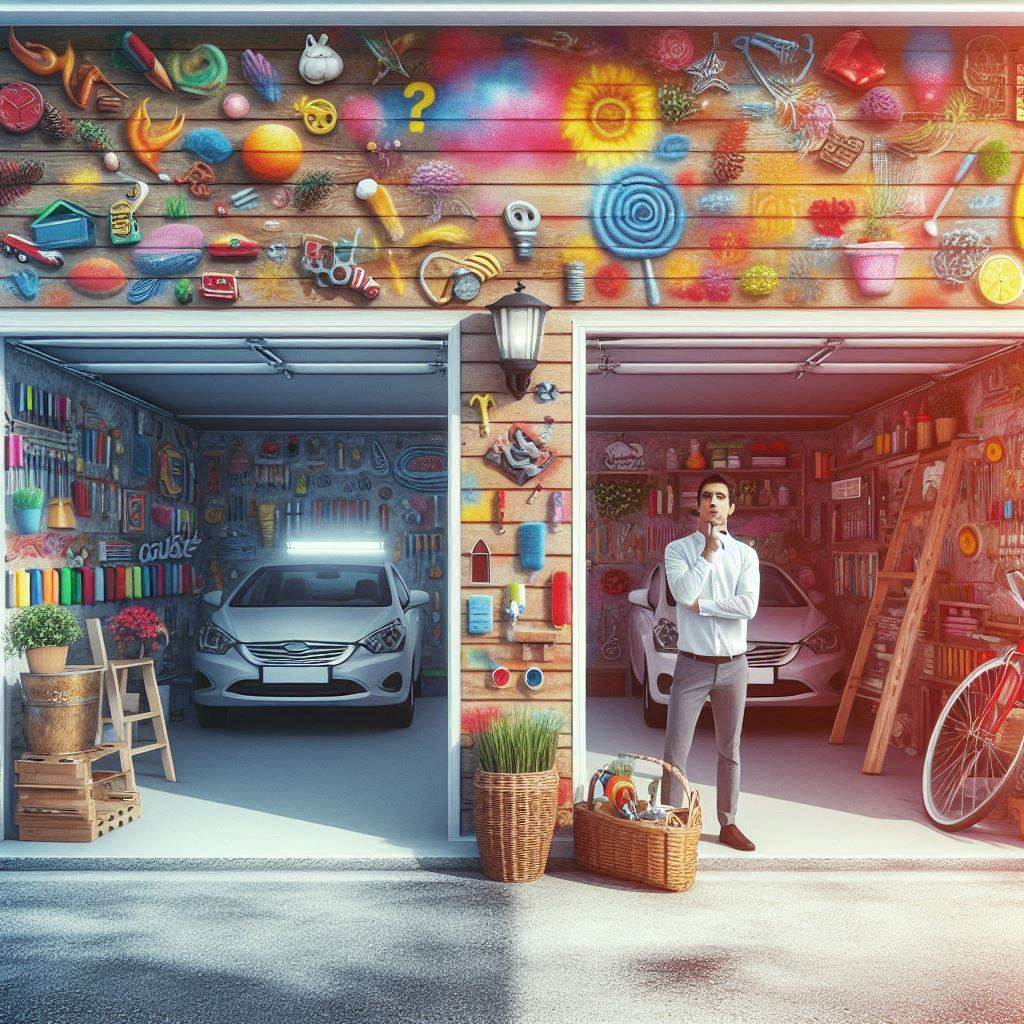
When it comes to painting your garage people often wonder should use interior paint or exterior paint because the entire house can be painted with interior paint but the garage situation is different people park their cars lawn machines and many other useful equipment like snow remover machines or tools so people prefer paint which support this type of environment better and it will stay for longer period that is why I came up with both interior and exterior paint benefits and downside for you to make a better choice.
Exterior Paint:
Durability: Stands up well to rough conditions, which is great for areas where heavy equipment and vehicles are stored. It can handle the wear and tear of tools and machines.
Moisture Resistance: Protects against moisture and spills, which is useful if you have equipment that might leak or if your garage is prone to dampness.
Temperature Tolerance: Resists temperature changes better, so it won’t crack or peel as easily if your garage experiences extreme temperatures.
Interior Paint:
Cost-Effective: Generally less expensive, which can be a better option if your garage is well-insulated and not exposed to harsh conditions.
Less Odor: Often has lower levels of volatile organic compounds (VOCs), making it better for indoor air quality if you spend a lot of time in the garage.
Better Option:
For garages with cars, lawn machines, and other equipment, exterior paint is usually the better choice due to its durability and moisture resistance. Interior paint is suitable if your garage is protected from extreme weather and you’re looking for a more budget-friendly option.
Do I Need to Use Drywall Primer?

Are you struggling with uneven paint coverage or paint not sticking properly on your drywall in the garage? You might be wondering if drywall primer can solve these issues. Here is why using a primer is a good idea for garage paint.
Will Primer Help Paint Stick Better?
Primer improves paint adhesion, so your paint job lasts longer and looks smoother.
Does Primer Seal the Drywall?
Primer seals small holes and the porous surface of drywall, stopping uneven paint absorption.
Will Primer Provide Even Coverage?
Primer creates a uniform surface, helping the paint cover more evenly and often reducing the number of coats needed.
Using drywall primer is a smart choice if you’re dealing with paint problems in your garage. It boosts paint adhesion, seals the surface, and ensures a smoother finish. For the best results, especially on new or patched drywall, start with a primer before applying your painting garage specially.
How Many Coats Of Paint For A Garage Wall?
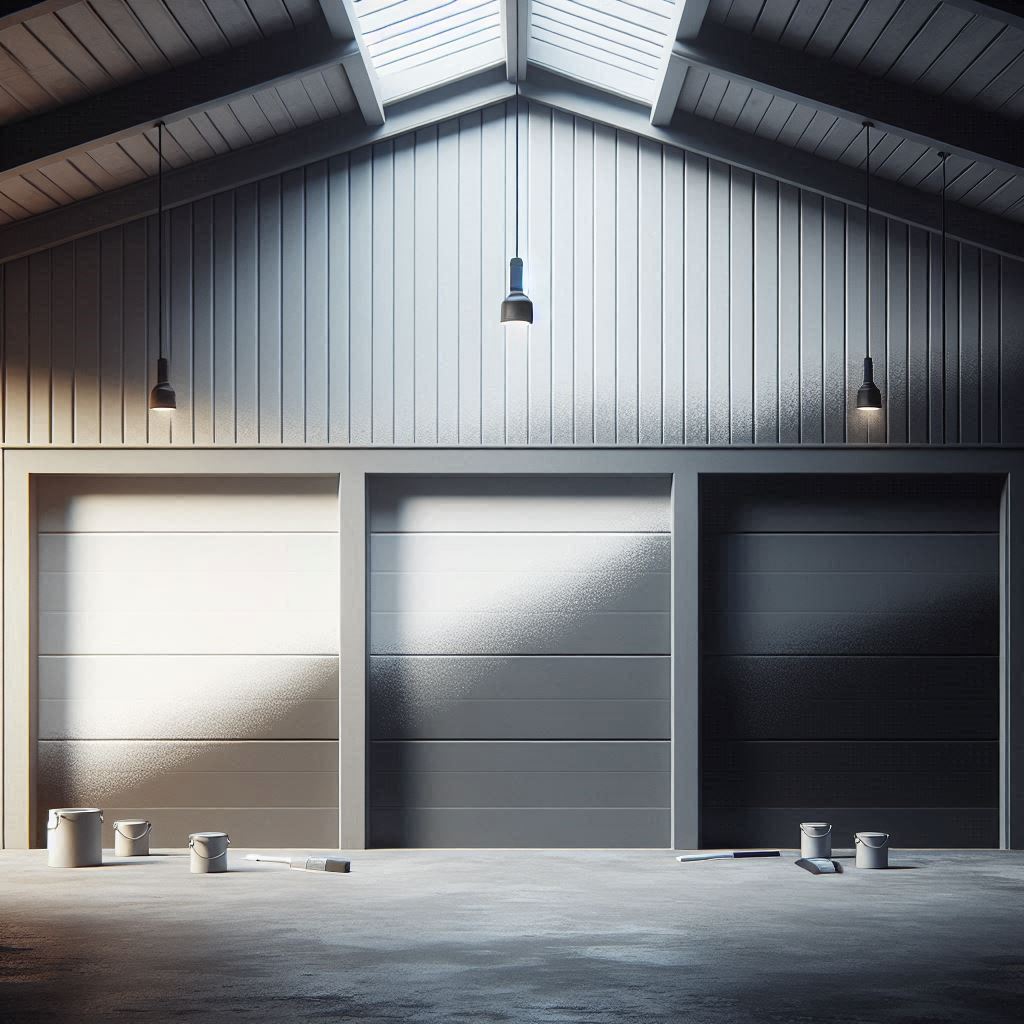
Typically, you should apply two coats of paint. The first coat covers the surface, while the second coat ensures a smooth, even finish. For covering stains or making a big color change, an additional coat may be needed. Two coats usually provide the best results and durability for garage walls.
But in places like the garage which is the place where all the heavy machines and equipment are putten and especially your car so I prefer 3 coats of paint is the best option for you.
Conclusion
Painting your garage walls is a straightforward project that can greatly enhance the look and functionality of your space. By choosing the right paint, preparing the walls properly, and applying the paint with care, you can achieve a professional-looking result that will last for years.
Whether you’re looking to create a cleaner workspace or simply refresh the appearance of your garage, a fresh coat of paint is an excellent investment in your home.
FAQs About Garage Wall Paint
Q1: Do I need to use a primer before painting garage walls?
A1: Yes, using a primer is highly recommended, especially for new or unfinished drywall. Primer helps seal the surface, improves paint adhesion, and ensures even coverage. It can also cover any imperfections or previous repairs, leading to a smoother and more durable finish.
Q2: How many coats of paint should I apply to garage walls?
A2: Typically, you should apply a primer coat followed by two coats of paint. The primer prepares the surface and helps with adhesion, while the first coat of paint provides initial coverage. The second coat ensures uniform color and adds durability. However, the exact number of coats may vary depending on the paint type and color contrast.
Q3: What type of paint is best for garage walls?
A3: For most garage walls, latex (water-based) paint is a good choice due to its ease of application, quick drying time, and low odor. If your garage has concrete or masonry walls, consider using masonry or concrete paint for better adhesion and moisture resistance. For high-moisture or high-traffic areas, oil-based paint may be appropriate for its durability and resistance.
Q4: How should I prepare my garage walls before painting?
A4: Start by cleaning the walls to remove dust, dirt, and grease. Fill any holes or cracks with spackle or joint compound and sand the surface smooth. For unfinished drywall, apply a coat of primer. Ensure the area is well-ventilated and free of any obstacles or items that could be damaged by paint.
Q5: How long does it take for garage wall paint to dry?
A5: Drying times vary depending on the type of paint used. Latex paint generally dries to the touch within 1-2 hours and can be recoated in 4-6 hours. Oil-based paints take longer, often requiring 6-8 hours to dry to the touch and 24 hours before recoating. Always follow the manufacturer’s instructions for specific drying times.
